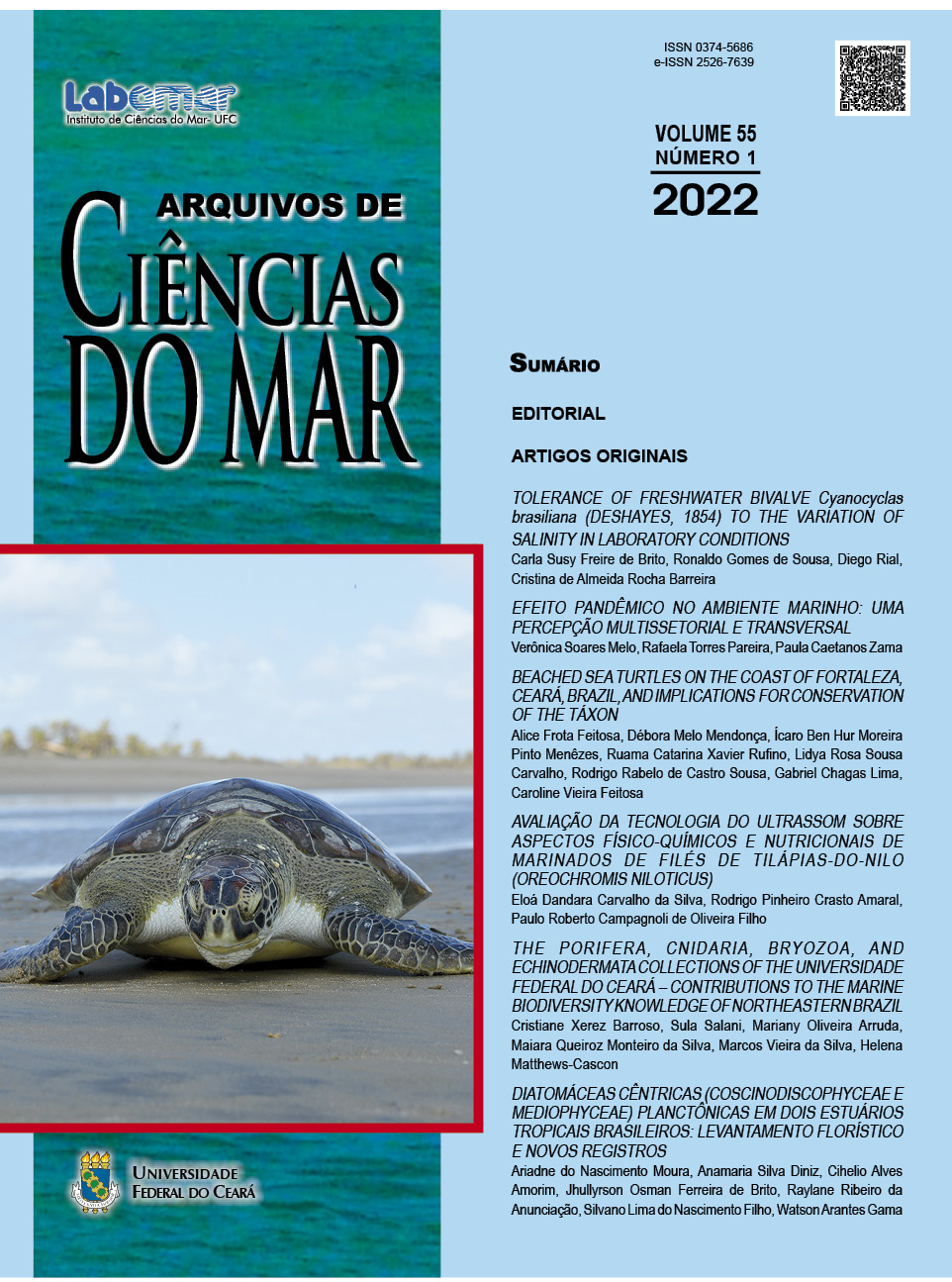AVALIAÇÃO DA TECNOLOGIA DO ULTRASSOM SOBRE ASPECTOS FÍSICO- QUÍMICOS E NUTRICIONAIS DE MARINADOS DE FILÉS DE TILÁPIA-DO-NILO (Oreochromis niloticus)
Evaluation of ultrasound technology on physical, chemical and nutritional aspects of Nile tilapia fillet marinates (Oreochromis niloticus)
DOI:
https://doi.org/10.32360/acmar.v55i1.72047Abstract
The average consumption of fish in Brazil is below the minimum recommended by the WHO. Among several factors for the low consumption of this food is the lack of preference in relation to other types of meat, lack of knowledge in the preparation of fish and little variability of fish products destined for commercialization. Therefore, the objective of the study was to evaluate physicochemical and nutritional aspects of marinated Nile tilapia fillets (Oreochromis niloticus) submitted to ultrasound technology. The marinated tilapia fillets submitted to ultrasound (US) were darker, less red and less yellow than the fillets from the control group (CON). The application of ultrasound (US) did not cause changes in texture and pH parameters with the CON treatment. Tilapia fillets marinated with US showed lower water activity (Aw). The volatile nitrogenous bases did not show variations between treatments. The marinades submitted to ο US had higher humidity. The other nutritional components (lipids, proteins and ash) showed no difference between treatments. Therefore, there is a great potential for the use of ultrasound in marinated tilapia fillets, mainly due to the positive influence on food safety (lower Aw) without interfering with protein, fat and ash.
Keywords: fish, fish marinade, sonic waves, fish quality.
Downloads
Published
Issue
Section
License
1. Proposta de Política para Periódicos de Acesso Livre
Autores que publicam nesta revista concordam com os seguintes termos:
- Autores mantém os direitos autorais e concedem à revista o direito de primeira publicação, com o trabalho simultaneamente licenciado sob a Licença Creative Commons Attribution que permite o compartilhamento do trabalho com reconhecimento da autoria e publicação inicial nesta revista.
- Autores têm autorização para assumir contratos adicionais separadamente, para distribuição não-exclusiva da versão do trabalho publicada nesta revista (ex.: publicar em repositório institucional ou como capítulo de livro), com reconhecimento de autoria e publicação inicial nesta revista.
- Autores têm permissão e são estimulados a publicar e distribuir seu trabalho online (ex.: em repositórios institucionais ou na sua página pessoal) a qualquer ponto antes ou durante o processo editorial, já que isso pode gerar alterações produtivas, bem como aumentar o impacto e a citação do trabalho publicado (Veja O Efeito do Acesso Livre).

